Neuropilin-1high monocytes protect against neonatal inflammation
- PMID: 38632385
- PMCID: PMC11143335
- DOI: 10.1038/s41423-024-01157-7
Neuropilin-1high monocytes protect against neonatal inflammation
Abstract
Neonates are susceptible to inflammatory disorders such as necrotizing enterocolitis (NEC) due to their immature immune system. The timely appearance of regulatory immune cells in early life contributes to the control of inflammation in neonates, yet the underlying mechanisms of which remain poorly understood. In this study, we identified a subset of neonatal monocytes characterized by high levels of neuropilin-1 (Nrp1), termed Nrp1high monocytes. Compared with their Nrp1low counterparts, Nrp1high monocytes displayed potent immunosuppressive activity. Nrp1 deficiency in myeloid cells aggravated the severity of NEC, whereas adoptive transfer of Nrp1high monocytes led to remission of NEC. Mechanistic studies showed that Nrp1, by binding to its ligand Sema4a, induced intracellular p38-MAPK/mTOR signaling and activated the transcription factor KLF4. KLF4 transactivated Nos2 and enhanced the production of nitric oxide (NO), a key mediator of immunosuppression in monocytes. These findings reveal an important immunosuppressive axis in neonatal monocytes and provide a potential therapeutic strategy for treating inflammatory disorders in neonates.
Keywords: Infant immunity; Inflammation; Monocytes; Neuropilin-1.
© 2024. The Author(s), under exclusive licence to CSI and USTC.
Conflict of interest statement
The authors declare no competing interests. J.Z. is an editorial board member of Cellular & Molecular Immunology, but she has not been involved in the peer review or the decision-making of the article.
Figures
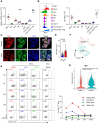
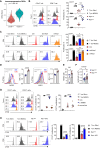
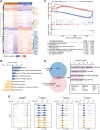
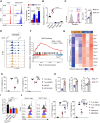
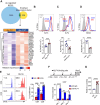
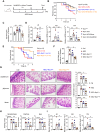
Similar articles
-
Stability and function of regulatory T cells is maintained by a neuropilin-1-semaphorin-4a axis.Nature. 2013 Sep 12;501(7466):252-6. doi: 10.1038/nature12428. Epub 2013 Aug 4. Nature. 2013. PMID: 23913274 Free PMC article.
-
NRP1 downregulation correlates with enhanced ILC2 responses during IL-33 challenge.Immunology. 2024 Jun;172(2):226-234. doi: 10.1111/imm.13769. Epub 2024 Feb 26. Immunology. 2024. PMID: 38409805
-
Regulation of monocyte subset proinflammatory responses within the lung microvasculature by the p38 MAPK/MK2 pathway.Am J Physiol Lung Cell Mol Physiol. 2011 Nov;301(5):L812-21. doi: 10.1152/ajplung.00092.2011. Epub 2011 Aug 26. Am J Physiol Lung Cell Mol Physiol. 2011. PMID: 21873449 Free PMC article.
-
NRP1 regulates HMGB1 in vascular endothelial cells under high homocysteine condition.Am J Physiol Heart Circ Physiol. 2019 May 1;316(5):H1039-H1046. doi: 10.1152/ajpheart.00746.2018. Epub 2019 Feb 15. Am J Physiol Heart Circ Physiol. 2019. PMID: 30767669
-
The importance of pro-inflammatory signaling in neonatal necrotizing enterocolitis.Semin Perinatol. 2008 Apr;32(2):100-6. doi: 10.1053/j.semperi.2008.01.001. Semin Perinatol. 2008. PMID: 18346533 Free PMC article. Review.
Cited by
-
NRP1 instructs IL-17-producing ILC3s to drive colitis progression.Cell Mol Immunol. 2025 Feb;22(2):161-175. doi: 10.1038/s41423-024-01246-7. Epub 2025 Jan 1. Cell Mol Immunol. 2025. PMID: 39741194
-
Clinical Characteristics and Influencing Factors of Feeding Intolerance After Surgery for Neonatal Necrotizing Enterocolitis.Children (Basel). 2025 Jan 24;12(2):127. doi: 10.3390/children12020127. Children (Basel). 2025. PMID: 40003228 Free PMC article.
References
MeSH terms
Substances
Grants and funding
- 81925018/National Natural Science Foundation of China (National Science Foundation of China)
- 82130049/National Natural Science Foundation of China (National Science Foundation of China)
- 82001660/National Natural Science Foundation of China (National Science Foundation of China)
- 2021M692406/China Postdoctoral Science Foundation
LinkOut - more resources
Full Text Sources
Molecular Biology Databases
Miscellaneous

